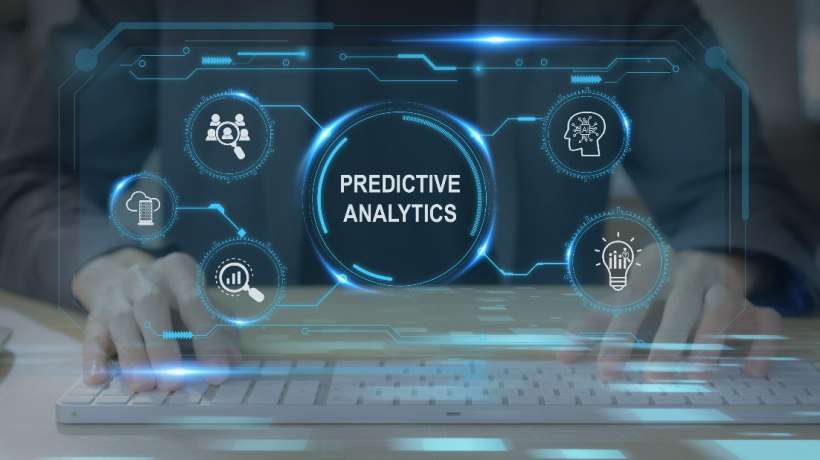Spotlight And Secure Top Talent With Data-Driven Insights
In today’s competitive business landscape, finding the right talent is more critical than ever. While traditional recruitment methods focus on experience and qualifications, predictive analytics takes a deeper dive into understanding future employee success. By leveraging data-driven insights, hiring platforms can enhance decision making and help companies make more informed choices about their potential hires.
An Overview Of Predictive Analytics
Predictive analytics refers to the use of historical data, statistical algorithms, and Machine Learning techniques to predict future outcomes. In the context of recruitment, it means evaluating not just a candidate’s current qualifications but also how likely they are to succeed, stay engaged, and contribute to a company over the long term.
The Role Of Predictive Analytics In Hiring Platforms
1. Improved Candidate Screening
Predictive analytics tools can assess candidates based on Key Performance Indicators (KPIs) that have historically been linked to successful employees. These KPIs may include skills, personality traits, work history, and even social media behavior. Using algorithms, hiring platforms can rank candidates according to their potential, making the screening process more efficient and effective.
2. Enhancing The Interview Process
Predictive analytics doesn’t stop at screening. It also plays a role in optimizing interview questions based on the data-driven profiles of high-performing employees. Platforms can recommend questions that target specific traits or behaviors, offering deeper insights into a candidate’s compatibility with the company’s culture and goals.
3. Reducing Turnover Rates
One of the most significant benefits of predictive analytics is its ability to anticipate employee turnover. By analyzing patterns from previous employees who left the organization, hiring platforms can identify candidates with similar red flags or risk factors. This insight allows HR professionals to make more strategic decisions, reducing costly turnover.
4. Uncovering Bias-Free Hiring
By relying on data rather than human intuition, predictive analytics helps reduce unconscious bias in hiring. The algorithms focus purely on factors linked to job success, such as performance history and key attributes. This results in fairer hiring practices, ensuring that every candidate gets a level playing field based on merit.
5. Long-Term Employee Success
Predictive analytics also helps determine the long-term success of employees by evaluating their potential for growth. Hiring platforms can use this data to recommend candidates likely to stay longer, advance in their roles, and align well with the company’s objectives.
How Predictive Analytics Transform The Hiring Platform Industry
-
Data-Driven Hiring Strategies
Traditional hiring methods often rely on gut feelings and subjective judgments. Predictive analytics introduces a data-driven approach, making recruitment decisions more objective and accurate. It shifts the focus from guesswork to insights derived from robust data models.
Recruitment is a time-sensitive process. Predictive analytics accelerates hiring by automating parts of the evaluation process. By pre-ranking candidates and flagging high-potential individuals, recruiters can spend more time engaging with top talent rather than sifting through resumes.
-
Personalized Recruitment Solutions
Predictive analytics allows for more personalized hiring solutions. Hiring platforms can tailor their offerings to different industries, roles, and company needs. For instance, predictive models may be adapted to prioritize leadership skills for managerial positions or technical expertise for IT roles, ensuring that each company finds the best fit for its unique requirements.
A Transformative Future Ahead
As technology continues to evolve, predictive analytics will become an integral part of hiring platforms. Future advancements will include deeper integration with Artificial Intelligence (AI), offering real-time insights and continuous learning from newly acquired data. Hiring platforms that invest in predictive analytics will lead the way in talent acquisition, helping businesses build stronger, more capable teams.
Predictive Analytics In Recruitment
Predictive analytics is reshaping the way businesses approach recruitment. Hiring platforms leveraging predictive analytics can now analyze vast amounts of data to make smarter, faster, and more effective hiring decisions.
Predictive analytics uses historical data, Machine Learning, and statistical models to forecast future outcomes. In hiring, it predicts how well a candidate will perform, their potential for long-term success, and even their likelihood to stay with the company. This data-driven approach goes beyond qualifications and experience, offering deeper insights into a candidate’s suitability.
Key Benefits Of Predictive Analytics In Hiring Platforms
- Improved candidate selection
Predictive analytics helps identify candidates who are not only qualified but also have the traits and characteristics that align with high performers. This reduces the risk of bad hires and saves time by focusing on the right talent. - Bias reduction
Algorithms based on data are less likely to be influenced by human bias, allowing for a fairer hiring process. Predictive analytics evaluates candidates on objective factors like performance potential, minimizing unconscious bias. - Lower turnover rates
Predictive models help assess a candidate’s likelihood of staying in the role for the long term. By hiring individuals with higher retention potential, companies can significantly reduce costly turnover.
Conclusion
Predictive analytics is becoming an essential tool for hiring platforms. By using data to forecast employee success and reduce bias, these platforms enable more efficient, fair, and strategic hiring. Companies adopting predictive analytics are better equipped to build strong, lasting teams in today’s competitive market.

